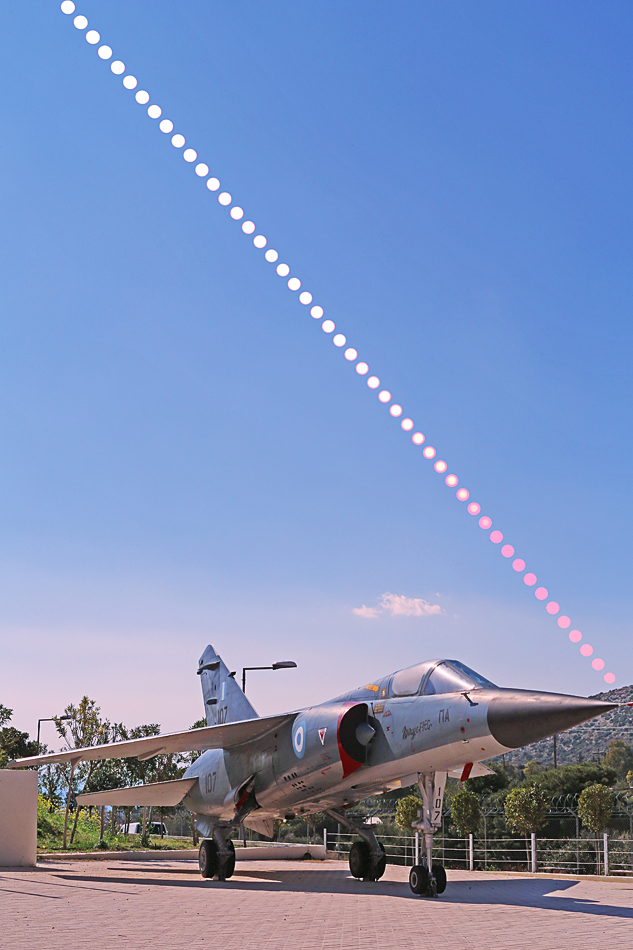
Our sun and closest star is believed to be approximately 4600 million years old and is composed (by mass) of hydrogen (74.5%), helium (23.5%)
and various other heavier elements (2%) such as oxygen and carbon. Due to this gaseous state, the sun does not rotate about its axis at one
uniform rate but has the poles rotating at a slower rate than the equatorial region. It has a central temperature of 14 million degrees
whereas the surface temperature is a mere 5500 °C. With a diameter of 1.4 million km, it is about 109 times as wide as Earth whereas with a
mass of 2 x 1030 kg, it is 335,000 times more massive than Earth. Of interest is the observation that its density of 1400
kg/m3 is only slightly more dense than water (1000 kg/m3).
Although the rising sun may seem to occur at approximately the same azimuth when observed from day to day, a longer term observational
project
will reveal this to be far from the truth. In fact, if we were to mentally note the azimuth of the rising sun around summer solstice in June
and repeat this exercise around winter solstice in December, we will note that the sun has shifted by approximately 65° during the intervening
six months!
This "moving target" involving the rising (or setting) sun is due to the elliptical nature of our planet's orbit around the sun which is
responsible for the variable arrival of the sun on the local meridian by up to 16 minutes early or late and the "Equation of Time" which is
described and documented elsewhere on this site along with the variable altitude due to
earth's tilt in its axis of rotation (23.45°) relative to its orbital plane.
Note: The fighter jet in the foreground below is a Mirage F1 CG built my Dassault Aviation of France. It is a
single-engine interceptor and attack fighter which saw service with fourteen militaries across the world including Greece's Hellenic Air Force.
This single-pilot aircraft measures 15.3 meters in length, 4.5 meters tall and has a wingspan of 8.4 meters across. It was able to achieve a
maximum speed of Mach 2.2 (2,338 km/h) with a combat and ferry range of 425 km and 3,300 km, respectively. Approximately 720 units were produced
starting in 1964 including a number of variants such as the Mirage F1 CG specifically designed for Greece's Hellenic Air Force. The
basic configuration supported two 30mm cannons (150 rounds per cannon), eight rocket pods (18x68mm rockets per pod), various bombs as well as
multiple AIM-9 Sidewinder missiles. The fourty units received by Greece between 1975 and 1978 were in operation for 28 years (1975-2003) and had
amassed 160,000 hours of flying time. The Mirage F1 CG on display below at the New Cemetery of Glyfada (southern Athens) was erected in Nov/2018
and honours the pilots of Greece's Hellenic Air Force who gave their lives while serving and defending their country during various wars and
conflicts during World War I and thereafter.
Note: For additional photos of the sun and/or full moon against other well-known Greek archaeological grounds
and sites, please click here.
|
Body: Sun Mass: 332,900 x Earth Mean Eq Diameter: 109.1 x Earth Distance: 149 million km RA / Dec: 23h 41m 41s / -01° 58' 59" Diameter: 32.16' Magnitude: -26.8 |
 |
Date: Mar 13, 2020 15:52 - 18:13 UT+2 Location: New Cemetery (Glyfada), Athens, Greece Equipment: Canon EOS 6D Baader BCF2 Filter Baader ND5 Filter Canon EOS EF 50mm/f1.8 II USM @ f8.0 Exposures: 48 x 1/250 sec ISO 200 JPG image format 5472x3648 Image Size Custom White Balance Manual Mode Continuous Servo Mode Software: Sequator V1.4 Photoshop CS5 Processing: Layers and Lighten Resampling JPG Compression |